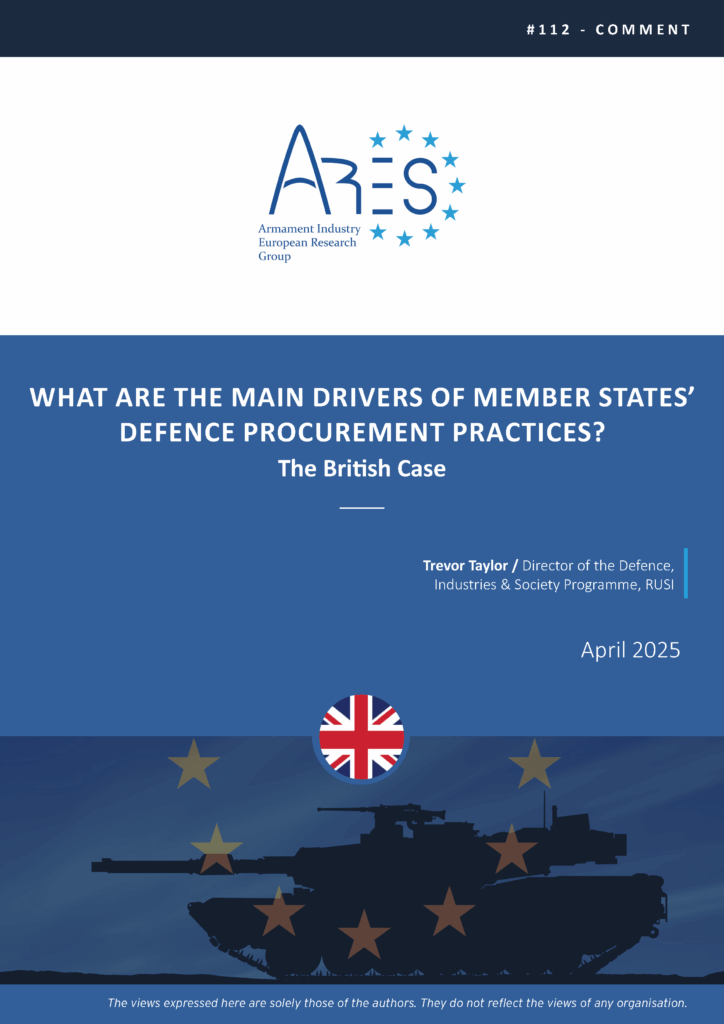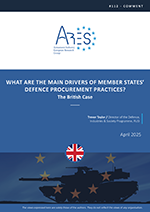Notes / ARES Group - The Armament Industry European Research Group
18 avril 2025
What Are the Main Drivers of Member States’ Defence Procurement Practices? The British Case

The drivers of UK procurement choices are multiple with different considerations appearing as prominent for different systems. The UK uses defence equipment choices. The UK expects defence procurement choices in the pursuit of multiple objectives.
The UK has had a core orientation towards defence competitive tendering from the international market since the late 1980s, and in government procurement in general this remains the core guidance. But defence has emerged as a special case given the diminution of IK defence suppliers in many sectors and UK governments’ ambitions for operational independence on the use of their forces, the maintenance and development of national defence industrial capabilities, and economic benefit from defence spending. Collaborative development with like-minded partners continued to be a way to spread costs and risks with the Global Combat Air Programme being the biggest case. The UK has also used US suppliers for many equipment items, especially airborne assets, but this has likely peaked. The changes in US behaviour in since the beginning of 2025.
There is likely consensus among those that focus on defence in the UK that Europe largely defined needs to much increase its capacity to deter and defend itself with much less US help. But the nature of the nature of the US relationship is marked by uncertainty. This will have consequences for UK and European defence behaviour.
READ:


